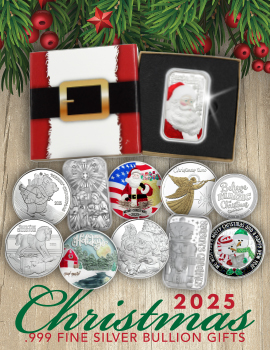
In this blog edition covering Whitman Publishing’s 100 Greatest United States Coins, we take a look at a top five pick that would be the first of many to come about in response to “unattractive coinage.” With a call to action from the President of the United States (and even before his position in the White House), the United States Mint produced one of the most striking gold coins in its history. However, that gold coin also happens to be extremely rare and highly out of reach, both attainable wise and financially. With help from author Jeff Garrett, let us journey through this next coin’s who, what, where, and why together.
#3 - MCMVII (1907) Ultra High Relief Saint-Gaudens Double Eagle
President Theodore Roosevelt had no reservations when it came to expressing his opinions on the state of United States coinage in the early 1900s. Along with calling it unattractive, he also referred to it as having little artistic merit. He long admired ancient Greek coinage and wanted U.S. coins to reflect the same beauty and relief. He also admired the work of Augustus Saint-Gaudens, a famous sculptor he would commission to redesign all the denominations.
While Saint-Gaudens was hoping to use an Indian Head obverse design for the double eagle, Roosevelt was adamant that the design be the standing figure of Liberty with the flying eagle reverse. Saint-Gaudens would use the goddess he created for the 1903 Sherman Victory monument as the motif. This means Liberty would face forward while holding an olive branch in one hand. Like Greek coins, the double eagle would be done in very high relief. The date of 1907 was shown in Roman numerals, MCMVII.
The MCMVII (1907) Ultra High Relief double eagle became the experimental issue as it was expressed by Charles Barber, the Chief Engraver of the United States Mint at the time, that it would be impractical to strike such a coin due to its high relief. The coin would need multiple strikes from the coin press. Saint-Gaudens would become ill and his assistant, Henry Hering, would have to complete the plaster model for the design. Hering knew the relief was too high, but he would go on to request examples be struck to test the design. In February of 1907, Hering would visit the Mint to check on the striking of the newly proposed coin. After multiple blows, nine strikes total, the coin showed up with every detail, thus creating one of the most coveted coins in numismatic history.
There are only 16 to 18 examples known to exist of the MCMVII (1907) Ultra High Relief double eagle. The finest example known was certified by PCGS in a PR69 and sold at an auction in 2005 for $2,990,000.
In 1960, the historic value for a Gem Proof condition was estimated at $60,000. By 2005, it rose to $3 million.







